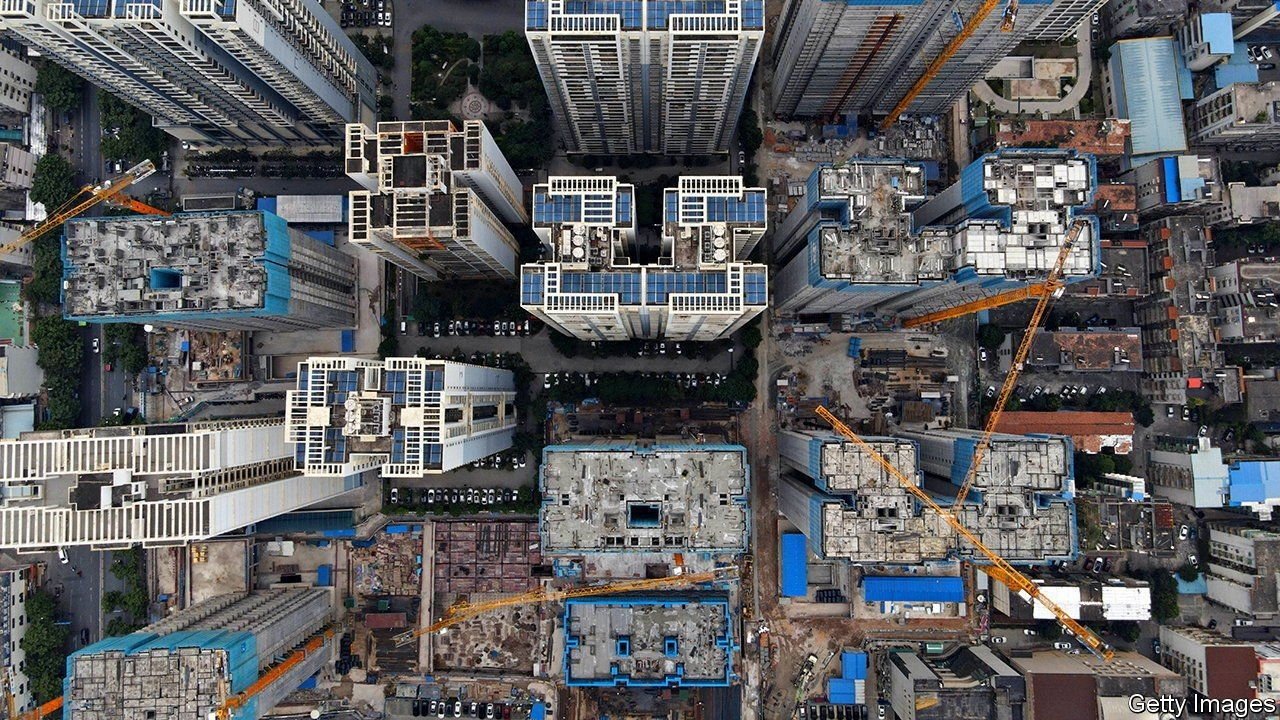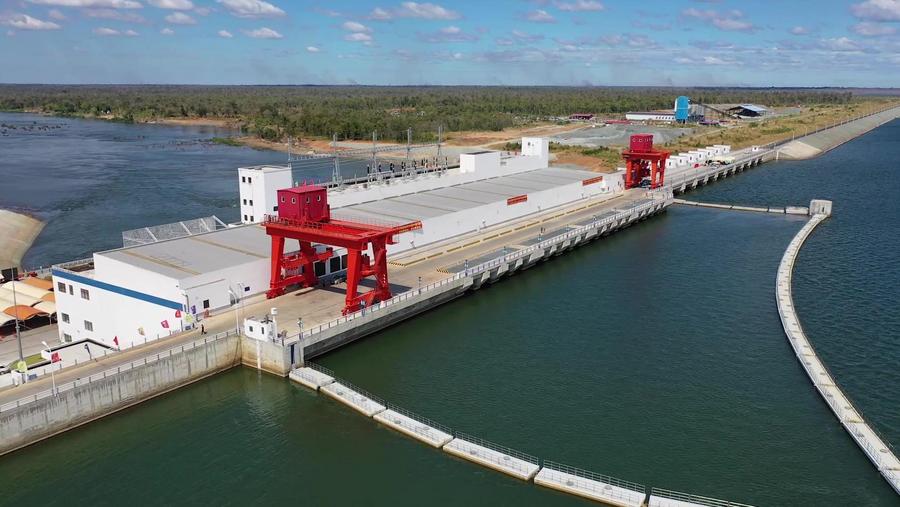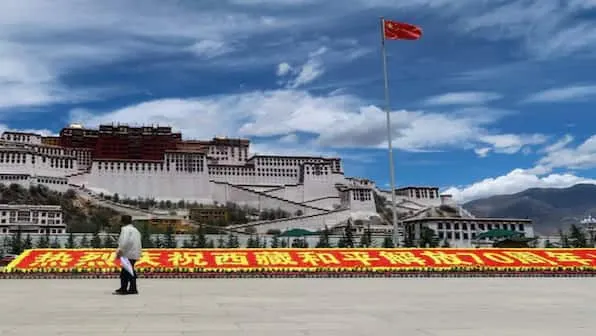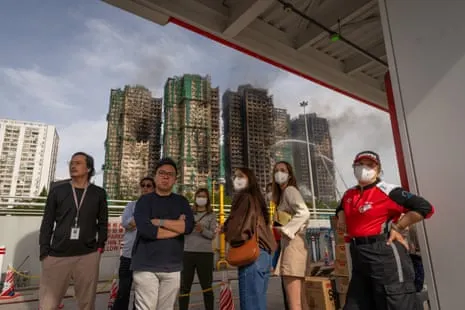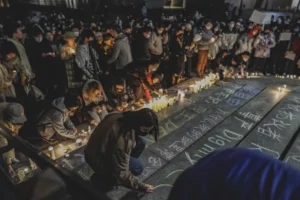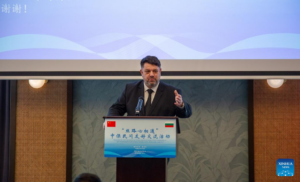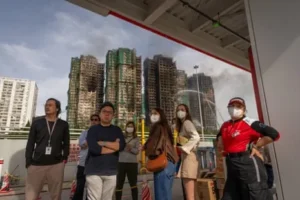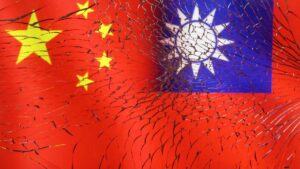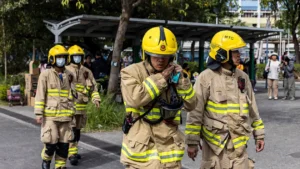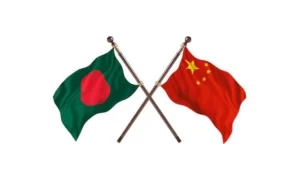As China’s economy slows, policymakers seek to revive growth
C HINA HAS not enjoyed much success at the sport of curling, which will feature in the Beijing winter Olympics beginning on February 4th. But the country’s economic policymakers could draw inspiration from the obscure event. Like curlers, they have a difficult target to hit. They are thought to be aiming for growth of 5% or more in 2022, despite the threat posed by the arrival of the Omicron variant of covid-19, which has appeared in seven provinces, big cities like Shanghai and Tianjin, and was reported in Beijing for the first time on January 15th.
Listen to this story Your browser does not support the
The parallels do not stop there. Just as the curlers must slide a “stone” (a kind of oversized puck) with enough force to reach the target, but not so much that it crashes off the ice, so must China’s policymakers strike a balance. They must give a slowing economy enough oomph to grow by 5%, but not so much that it exceeds its limits, contributing to inflation and speculation.
According to figures released on January 17th, China’s GDP grew by 8.1% in 2021, its fastest pace since 2011. “Nominal” GDP , which does not adjust for inflation, grew even more quickly: by about 12.6%. And because China’s currency also strengthened, its GDP surpassed $17.7trn (at market exchange rates), an increase of 20% over the year before. Judging by these numbers, the economy would seem to have all the momentum it needs.
But the pandemic so weakened China’s economy in early 2020 that the following year was always going to look unusually strong by comparison. As 2021 progressed, growth ebbed (see chart 1). Now the economy must also contend with the Omicron variant. Unlike other countries, China has no intention to “live with” the virus, even if its latest iteration is less severe than earlier ones. It will instead try to keep covid’s least repressible variant at bay. Mandatory testing in Tianjin, for example, has already forced Toyota to suspend carmaking at its joint venture in the city. Volkswagen has experienced similar problems. Meanwhile, Delta has not disappeared. A wide-ranging lockdown was imposed on the city of Xi’an in central China after its officials failed to contain an outbreak of the Delta variant quickly enough. Micron, which assembles and tests DRAM microchips (used for temporary storage) in the city, said the measures would have “some impact” on its plant’s output. Samsung also said it will have to “adjust” production at its flash-memory factory, which accounts for about 15% of the world’s capacity for NAND chips, according to TrendForce, a market-intelligence firm. ( NAND chips are used for permanent storage.)
China’s overseas customers worry about what would happen if a Xi’an-style lockdown were imposed on a city closer to the heart of the country’s export machine. But optimists point out that China’s export hubs lie mostly in more prosperous regions with more capable governments. They have more effective contact tracing, which could allow their lockdowns to be more precisely targeted. After Omicron infections were discovered in Shanghai, for example, the authorities raised the “risk” level (which entails tightened restrictions on movement) not for the entire city or an entire district, but for zones as small as a bubble tea shop, where three workers were infected. “Zero-covid has maybe 1,000 faces in 1,000 cities”, says one analyst, depending on the resources each place can lavish on the strategy. The more immediate economic threat posed by Omicron is not to foreign customers but to China’s own consumers. Intermittent restrictions on travel and gatherings have hampered retail spending, which grew by only 1.7% in nominal terms in December, compared with a year earlier, and shrank, after adjusting for inflation. Goldman Sachs, a bank, thinks further lockdowns this year could cut a full percentage point off growth in household consumption. It has lowered its growth forecast for GDP as a whole from 4.8% to 4.3%, below the government’s target. China’s recent economic momentum has also suffered from coal shortages, environmental limits on energy intensity, regulatory crackdowns on consumer-facing tech companies, and strict curbs on borrowing by property developers, which forced several to default, shaking the confidence of homebuyers. In curling, teams frantically sweep debris and other impediments out of the stone’s way to smooth its passage across the ice. In China, policymakers have been doing the opposite, sweeping one regulatory obstacle after another into the economy’s path. What explains this regulatory zeal? After the economy bounced back quickly from the first wave of the pandemic, China’s policymakers may have concluded that it was a good time to curb some of the negative side-effects of growth, such as pollution and property speculation. Economic momentum seemed assured. Exports in particular boomed as people around the world spent less on face-to-face services during the pandemic and more on goods to keep them safe (masks), slim (exercise bikes) and sane (games consoles).
But this external source of growth may ebb over 2022. Foreigners are unlikely to splash out again on the home comforts that got them through recent lockdowns. Customers who bought a games console or exercise bike in 2021 probably will not need an upgrade soon. Moreover, for China’s exports to grow from their current levels, the splurge would have to be increased, not merely repeated.
Somewhat belatedly, policymakers have now realised that growth needs stabilising. On January 17th China’s central bank cut the interest rate on its one-year loans from 2.95% to 2.85%. That was followed days later by a fall in the reference rates for bank loans. These reductions follow a cut last month in the reserve requirements imposed on banks.
The government is also easing fiscal policy. It has extended income-tax breaks, including favourable treatment for year-end bonuses. It is encouraging local governments to issue more “special” bonds (which are meant to be repaid out of revenues from the infrastructure projects they finance). It is also hastening construction of 102 infrastructure “mega-projects” outlined in the country’s five-year plan for 2021-25. China’s state grid will, for example, build 13 ultra-high-voltage transmission lines in 2022. Increased infrastructure investment could add at least a percentage point to GDP growth in the first half of 2022, according to Morgan Stanley, a bank.
Analysts at Morgan Stanley are relatively confident about the government’s chances of meeting its growth target this year, as long as policymakers bring about a soft landing for the property market. Home sales fell by almost 18% in December, compared with a year before. To arrest this trend, government officials have tried hard to reassure homebuyers that the flats they have bought in advance will be built, even if the developer that sold them goes bust. Mortgage rates are edging downwards. And a number of cities have experimented with subsidies and tax cuts to encourage homebuying. Rosealea Yao of Gavekal Dragonomics, a consultancy, thinks sales will improve in the first quarter compared with the previous three months.
But although China’s national rulers are now committed to stabilising the economy, they are still wary of overstimulating property, which is prone to worrying speculative bubbles. Beijing wants local governments to do enough, but not too much. After the northern province of Heilongjiang promised an “all-out sprint” to revive the property market, the exhortation was soon removed from the internet, points out Ms Yao. The measured art of curling, not sprinting, is the better metaphor for the government’s aims. ■
Correction (January 28th 2022): A previous version of this piece referred to the sweepers in curling as “skaters”. In fact, they do not wear skates.
For more expert analysis of the biggest stories in economics, business and markets, sign up to Money Talks, our weekly newsletter.
